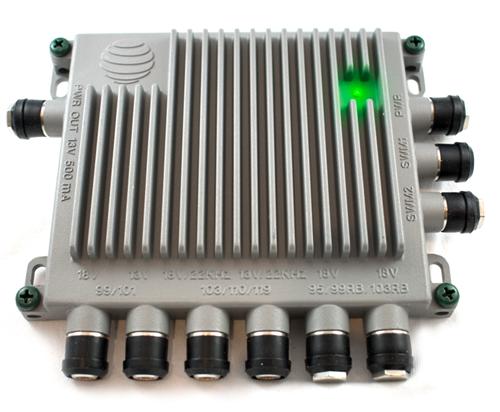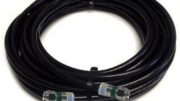One of our Signal Connect representatives took a call from a commercial installer recently. In this call, the installer wanted to run about 250 feet from a SWM-enabled dish into a small headend system, and wanted to know the best amplifier to use.
The answer is… don’t do that.
If you’re putting in a commercial satellite system, AT&T’s standard policy dictates the use of a legacy (6-wire) dish and an external SWM. You can place an amplifier and polarity locker near the dish if needed. In a case where the dish was 250′ from the rack, it would be needed.
Why use such a complex setup?
A SWM-enabled dish can easily feed 13 receivers. It is not only the standard dish for home installs, it’s practically the only dish. With this dish, you can also supply satellite TV to a whole-home Genie system. It’s a simple way to wire the home and simplicity is really appealing to home users.
Commercial users may want simplicity too, but there’s more to it than that. If you’re really wiring up a commercial system and it’s truly very similar to a home system, then use a home solution. If the cable runs are short and you’re running multiple receivers to multiple TVs, do that — set your customer up with the simplest possible system and they’ll be happy. They’ll probably save a little money, too.
On the other hand, if you’re running a bar system with matrix switches and long cable runs and distribution through multiple closets, you need a heavy-duty solution. You need amplifiers that you can control. Also, you must make sure the dish has its own power independent of other devices. Finally, you need to place the distribution points where you need them.
For all these reasons, I recommend following DIRECTV standards and using non-SWM dishes in commercial installs.
A quick word about the SWM-30HP
There’s a device called the SWM-30HP sold by Solid Signal. Its output is about 100 times stronger than the output of the standard SWM-30. There are a couple of things to consider if you use this device.
- You will damage your receivers if you use it wrong. If the signal level at the receiver is stronger than -30dBm, you will damage your receiver. You can use an attenuator like this one at the receiver if you need to, but you will be responsible for the results. You’ve been warned, and that’s the extent of Solid Signal’s responsibility.
- This device won’t really work right for residential customers. If you have DIRECTV at home, you can use a SWM-30HP but it’s not going to let you with longer distances. Networked receivers and Genie clients rely on two-way communication, and that communication gets flaky after about 200 feet of cable. This multiswitch won’t help that, and the regular SWM should be able to handle that run.
The case for wiring it all now
Your customer may tell you that they want a simple setup now, and they’ll upgrade later. This is very common, especially when the goal is to save money. No one wants to pay for six times as much cable, and for complex extra pieces of equipment at different places. However, it really makes sense to do all the cabling from the roof to the main closet at the time you’re doing the initial install.
Any commercial installer will tell you that getting cables from the roof is usually the most time-consuming part of any install. That’s why you should do it once. If you need to go back into the walls or plenum to run more cable, it’s going to be even harder than if you did it right the first time. Plus, you’ll probably end up throwing away that original line to make sure all the lines are the same age and quality. It’s only common sense.
7 lines is the ultimate
If you have made the case to your customer that they should be using a commercial-grade solution, absolutely recommend that you run 7 lines from dish to rack. Four lines are needed today, two are definitely needed for 4K, and the last one can be used for a spare, for international programming, or for a TV antenna. Running 7 lines more or less guarantees that short of some sort of major disaster, you will never have to go back into the walls again. There’s a lot of value to that for you as the installer and for the customer as well. It means that upgrades and repairs can be easy and quick. You’ll be in and out in a flash and the customer will have the TV service they want!
Want to know more? Call the experts! We have skilled technicians on staff during East Coast business hours. Call us at 888-233-7563 during East Coast business hours. If it’s after hours, no problem! Fill out the form below and we’ll get right back to you.





